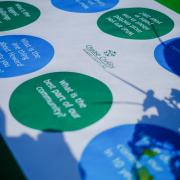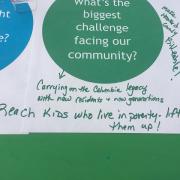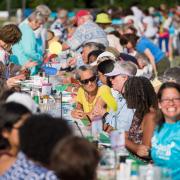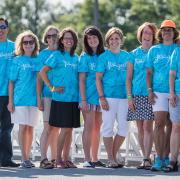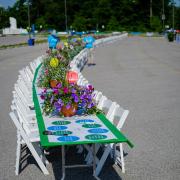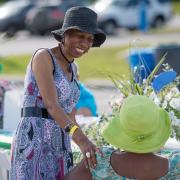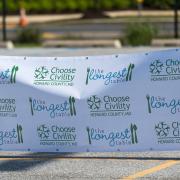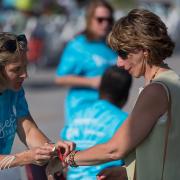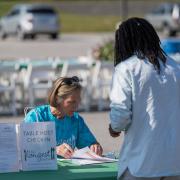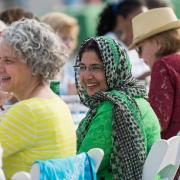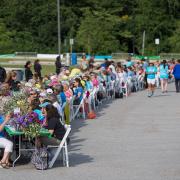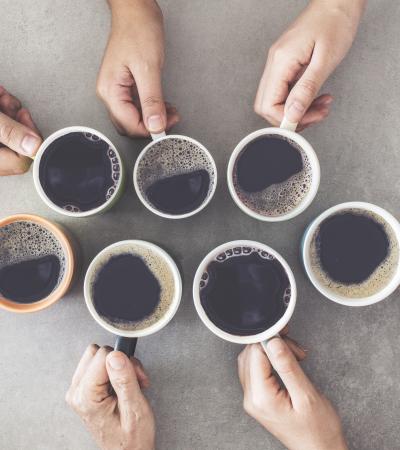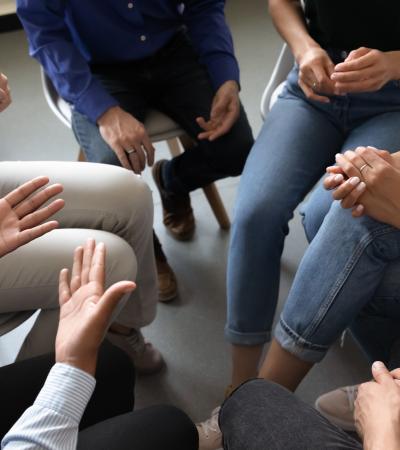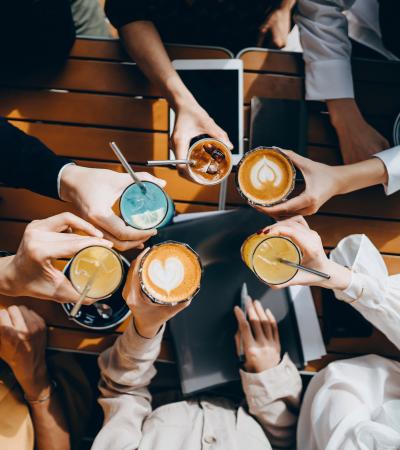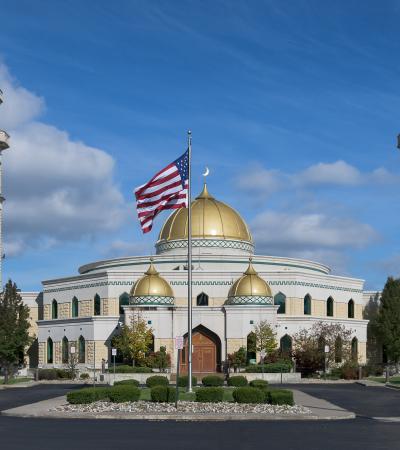The Longest Table, the first of its kind in Maryland, brought together a diverse group of more than 300 guests to share a meal and engage in meaningful conversation about their community. This program was part of Choose Civility, an ongoing community-wide initiative, led by Howard County Library System, to position Howard County as a model of civility. The initiative's mission values diversity and chooses respect, compassion, empathy and inclusiveness as essential to quality of life.
The event provided a setting for guests to share their experiences, gain an understanding of how to find common ground and move their community forward together. Guests exchanged stories about life in Howard County, both where it has been and where it is going. The intent was to enable people to make new connections and engage in conversation about diverse perspectives and common goals.
Advanced Planning
Our goals were to:
- Attract a diverse selection of guests, both from geographic and demographic perspectives
- Enable guests to make new connections
- Facilitate conversations about diverse perspectives and common goals
We hoped that people would find commonality among their community concerns and discuss solutions.
Planning began 11 months before the event. We began by identifying potential planning partners, then selecting a location and date.
Location challenges included a limitation of sites on county-owned property (for risk management issues) that not only had the capacity for a large outdoor event but also offered an adequate indoor site in case of inclement weather. Date challenges included risk of rain or excessive heat, site availability, conflicting events and religious holidays.
Once the date and location were determined, the next steps were to decide how best to cater an event of this size (e.g., buffet vs. family style, one caterer vs. several restaurants, servers) and what ticket price (if any) to charge. We created a timeline to guide our planning, outlining publicity, logistical, catering and other needs for an event of this size. Members divided into subcommittees (e.g., site, catering, sponsors, communications, conversation starters, budget, logistics, staffing) and gave reports at regular meetings. (See a detailed overview under Attachments at right.)
Marketing
We began marketing approximately 10 weeks prior to the event. We chose two price points: $10 for high school and college students and $15 for everyone else.
For the event we:
- Created an Eventbrite page for ticket sales
- Designed and produced postcards and fliers (View postcards under Attachments at right.)
- Purchased targeted ads on social media
- Promoted the event on HCLS and Choose Civility websites
- Provided images and language for partner organizations to send to their networks
- Sent e-blasts to HCLS and Choose Civility lists
- Issued media advisories
- Hung a large banner outside one of the buildings near the site
We also recruited community leaders to serve as table hosts and asked them to help promote the event. Our partners’ promotional assistance was invaluable.
The result was a total of 320 guests representing 18 or 20 Howard County zip codes and a mix of religions, ages and ethnic backgrounds. In a post-event survey, many guests expressed a desire to repeat the event next year.
Budgeting
Expenditures included:
- Catering: Food and beverage, paper products, health department permits
- Staffing: Photographer, wait staff, security
- Printing: Postcards, signs, banners, table runners
- Advertising
- Rentals: Porta-Potties, tables, chairs, tents, generator
- Miscellaneous: Insurance, t-shirts, Eventbrite fees, supplies
A number of costs were covered as in-kind donations by the site. All costs were covered by ticket sales and sponsorships. (See sponsorship packet under Attachments at right.) The biggest costs were catering (even as a combination of in-kind and partial donations), wait staff, printing and rentals.
Day-of-event Activity
The event was scheduled to run from 6 to 8 p.m.
Earlier in the day, the site of the event provided its facilities crew to block off the parking lot; receive rental deliveries; set up tables, chairs and tents; and set up fencing around the perimeter. They blocked off the parking lot the evening prior and set up equipment beginning early afternoon. Additional set-up included covering the 320-foot table with coverings and table runners, placing plants and numbers on each table, setting up registration tables, and setting up a physical barrier around the event area.
In addition to the facilities crew, approximately 15 event staff were needed for set-up. The event photographer and drone operator handled their own set up needs. (View drone footage under Videos and Images at right.)
Program Execution
We had 320 people attend the event. As guests arrived they were given a colored wristband that corresponded with a table. In order to encourage interaction between strangers, guests were not seated with the friends/family that accompanied them to the event. Each table had a designated host, who greeted their guests and helped to keep the conversation going. Hosts were comprised of community leaders recruited by planning partners, wore Longest Table t-shirts and were given a brief overview and guidelines in advance.
Conversation starters ran the length of the table with questions such as "How would you describe our community?"; "What’s the biggest challenge facing our community?"; "Where do you see our community in 10 years?"; and "What brought you to Howard County and what keeps you here?" Guests were encouraged to make comments or take notes on the runner with markers placed on the tables.
Event staff rang dinner bells to signify the official start of the meal. Catering staff served the family-style pasta meal to each table, and dining and conversation occurred simultaneously for two hours. Guests and members of the planning committee provided positive feedback and a desire to do it again.
We sent a survey, via Survey Monkey, to all guests immediately following the program asking them:
- To rate the overall event
- To comment on the length of the event
- How likely they would be to participate again
- What they would change
- What other conversation starters they would recommend
- What topics they would like to explore
- Whether they would be willing to host a follow-up event to continue the conversation
- If they would like to provide additional comments
Reponses were overwhelmingly positive with 93 percent rating the event very good or excellent, and 84 percent saying they would “absolutely” participate again. Seventy-two percent said the length of the event was “about right.”
Suggested changes included gaps between tables (while the symbolism and visual of one long table was powerful, it created logistical challenges), recruiting more table hosts (not every table had one), nametags, switching seating groups before dessert, and providing more guidance for table hosts.
In the planning committee evaluation meeting, suggestions included a need for more staff and volunteers (e.g., table hosts, ushers), more communication with table hosts about expectations, using a sound system to more clearly define start and end times, and additional outreach to diverse groups.
Advice
- Allow ample time to determine location.
- If applicable, contact risk management for your local jurisdiction about limitations and insurance requirements.
- Hire a caterer who can oversee and facilitate the serving of dinner.
- Seek partnerships with local community organizations for purposes of planning and marketing.
- Charge a fee for tickets — not enough to deter people, but enough to ensure attendance.
- Include representatives from all segments of your community on the planning committee.
- Check community and religious calendars before setting the date.
- Above all, contact us about our lessons learned and how to obtain the artwork.
Supporting Materials
- Feedback (Coming Soon!)
- Programming Librarian Facebook Group

